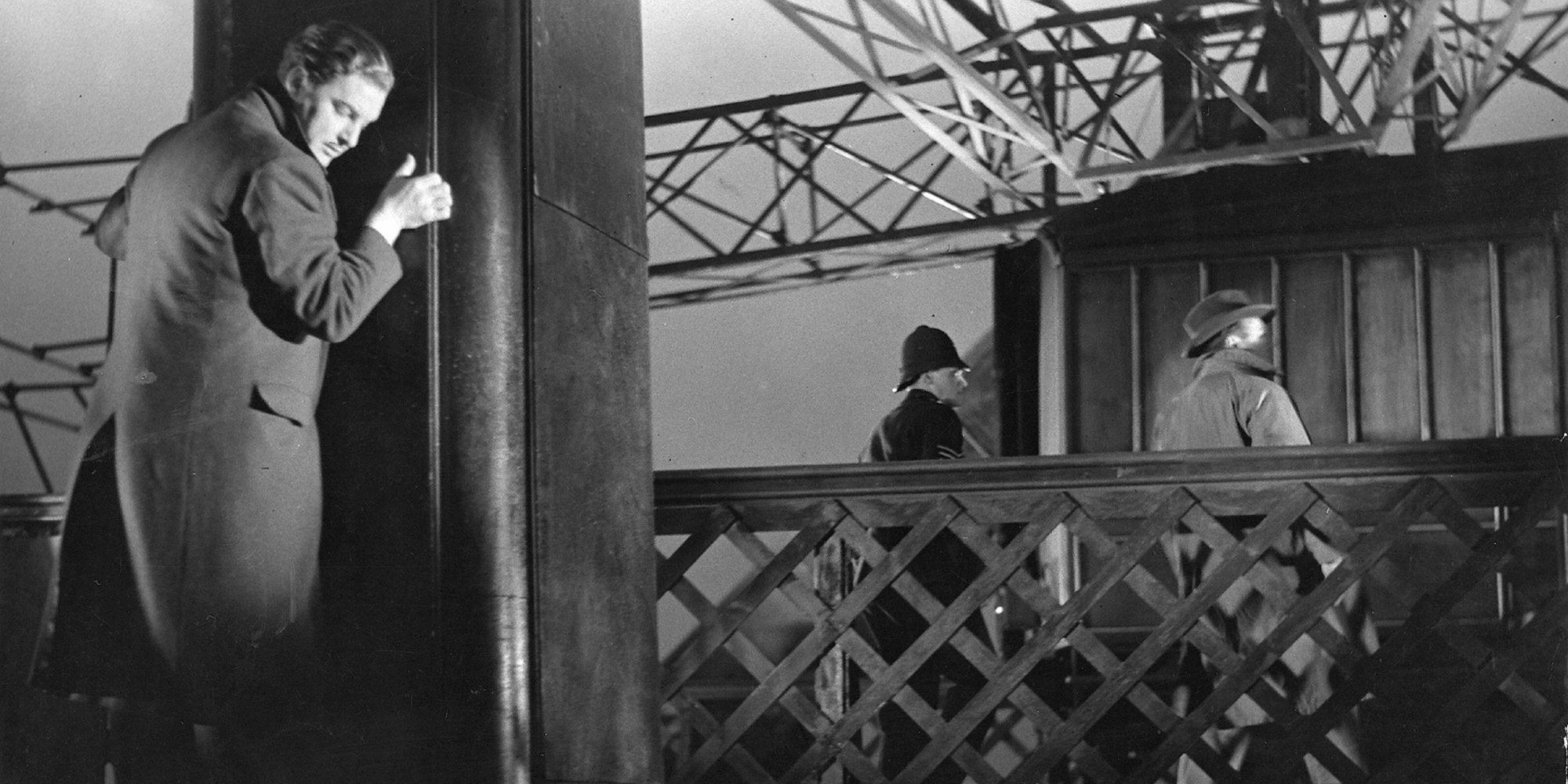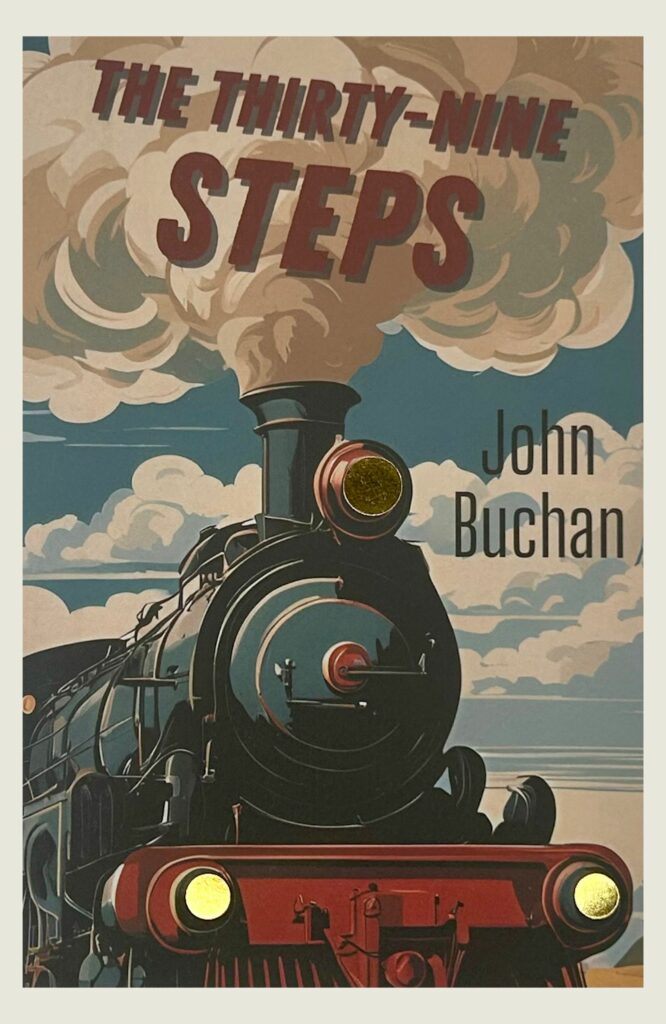
David Stuart Davies looks at The Thirty-Nine Steps
David Stuart Davies looks at The Thirty Nine Steps, the first modern spy thriller.
‘I have long cherished an affection for that elementary type of tale which Americans call the ‘dime novel’, and which we know as the ‘shocker’ — the romance where the incidents defy the probabilities and march just inside the borders of the possible.’
John Buchan
John Buchan’s The Thirty-Nine Steps was the first and one of the best modern spy thrillers to be published in the twentieth century. It embodies many of the ideas, motifs and themes that were to be taken up by other writers in the field who came along after Buchan, including Sapper with the Bulldog Drummond stories, Geoffrey Household’s Rogue Male, and Ian Fleming and his James Bond novels.
The Thirty-Nine Steps was written in 1914, the year Britain entered the Great War, and published in 1915. The novel had the advantage of not only being a compulsive page-turner with a satisfying racy pace but at the time it was also extremely topical. Buchan plays upon the British patriotism of the period and, to a certain extent, with the anti-German feeling, which ran high in the first years of the war. The fact that the action of the novel is premised on ‘real-life’ events that Buchan’s readership would recognise from the reporting of the war gives the often improbably fortuitous turn of events that contribute to Hannay’s ultimate success some plausibility.
Buchan’s choice to locate the scene of the action in Scotland, with the hero Richard Hannay adventuring across the Galloway hills and meeting with various colourful Borders characters, added colour and romance to the novel. In this, Buchan was probably drawing on his Scottish literary predecessors, Robert Louis Stevenson and Walter Scott. Indeed, his lyrical description of the Scottish scenery, capturing the sweep and grandeur of the highlands is one of the great pleasures of the book.
Because of the uncluttered nature of the plot and the use of the Scottish locale for most of the chase sequences – a locale which has changed little in the intervening years since the book was written – The Thirty-Nine Steps still appears fresh and appealing to the modern reader. Richard Hannay is an exotic outsider, a colonial entrepreneur, and one who, crucially, does not operate within the socially defined parameters of the public school network, aristocracy or the political intelligentsia. In essence, Hannay is everyman, a bored Englishman wishing something would happen. And then it does. When he thinks he is likely to die of boredom, he is entrusted indirectly with a task which must be carried out by him alone to ensure the security of Britain. Every shadow is to be feared, every face to be doubted and every promise to be mistrusted. In southwest Scotland Hannay is a stranger in a strange land being hunted by an unseen enemy but in the countryside very familiar to many of his readers of yesterday and today. It is by these techniques that Buchan creates and maintains the taut suspense that exists throughout the whole book. We travel with Hannay at speed to Scotland, back to London and then to the coast and like him, we do not know what to expect. What better way is there for a writer to persuade the reader to continue reading?
Having extolled the virtues of the book as an out-and-out thriller, one must also note that The Thirty-Nine Steps carries quite a bit of the baggage of the detective story with it as well. Like a sleuth hound, Hannay tackles cryptograms, shows himself excellent in disguise, and wrestles with the tantalising clue embedded in the title. Despite his claim that he is no Sherlock Holmes, Hannay makes deductions from clues given to him by the spy Scudder. In fact, as a character type, he is a new concept altogether: a physically active thriller hero facing the challenge of intellectual exertion because he has been thrown into the role of a detective. Hannay makes time and space for a detective’s contemplations – deductive moments when he can mull over events and puzzles – by getting onto a train and sleeping in the heather, but he is continually shunted out of these reflective spaces by the imperative of pursuit. Buchan’s genius lay in combining these two elements into an effective unity. In fact, it could be claimed that with The Thirty-Nine Steps he created a new genre on the fiction map. ‘The literary innkeeper’ character sums it up well when having been told an embroidered version of Hannay’s story, he exclaims ‘My God! It is all pure Rider Haggard and Conan Doyle’. And indeed Buchan does combine the best of both of these authors, creating a narrative that lies somewhere between an adventure yarn and a detective story.
Those who come to the novel after watching the 1935 film version directed by Alfred Hitchcock are surprised that there is no attractive blonde handcuffed to our hero Hannay (Robert Donat), making them inseparable as they flee from the baddies and find themselves in various amusing risqué situations. Buchan wasn’t very good on sex or, indeed, humour which Hitchcock quite effectively injected into his take on the novel. However, again we have to remember the nature of the period when the novel was offered up to the public. Buchan wrote the story when male authors rarely featured women as main characters involved in dramatic action. They were wives, girlfriends or mothers and watched from the sidelines. War and spy work was men’s business and this was reflected in the plotting.
There have been two other film versions. The 1959 movie starring Kenneth More was presented in a contemporary setting, but the movie made in 1978 with Robert Powell in the lead placed the action in the correct period – although this adaptation did feature a preposterous finale with Hannay dangling from the face of Big Ben. In the 1980s Powell played the part again in a television series called Hannay. There was an interesting BBC TV version with Rupert Penry Jones as Hannay in 2008, but when this wasn’t relying on Hitchcock’s additions, it played around with the original plot.
In 2007 a light-hearted spoof of The Thirty-Nine Steps did very good business in London’s West End, receiving enthusiastic reviews. One might use the old cliché which observes that there is life in the old dog yet. And why not? The source material still works as a first-class thriller that not only holds the attention but also raises the pulse rate at key moments. While wearing proudly the venerable title of ‘classic’, The Thirty-Nine Steps still remains a lively, effective and enjoyable read.
Books associated with this article
